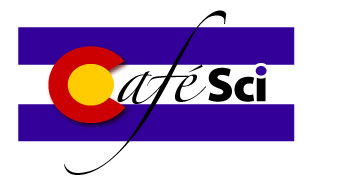Nick Schneider is an associate professor in the Department of Astrophysical and Planetary Sciences at the University of Colorado and a researcher in the Laboratory for Atmospheric and Space Physics. He received his Ph.D. in planetary science from the University of Arizona in 1988. His research interests include planetary atmospheres and planetary astronomy, with one focus on the odd case of Jupiterís moon Io. He is also the lead on the Imaging UltraViolet Spectrograph on the upcoming MAVEN mission to Mars. He enjoys teaching at all levels and is active in efforts to improve undergraduate astronomy education. Off the job, he enjoys exploring the outdoors with his family and figuring out how things work. |

|
The climate changes that capture today's headlines here on Earth are nothing compared the truly drastic climate change that occurred on Mars. The latest results from Mars missions confirm that Mars was once warmer, wetter, and possibly habitable billions of years ago. But then something went horribly wrong, and now Mars is cold, dry, and desolate. I'll start with a discussion of how and why Mars changed, and end by describing the upcoming CU/NASA mission "MAVEN", the Mars Atmosphere and Volatile EvolutioN mission, designed to solve the mysteries of Mars' ancient atmosphere.
In the largest research contract ever awarded to the University of Colorado at Boulder, the Laboratory for Atmospheric and Space Physics has been selected by NASA to lead a $485 million orbiting space mission slated to launch in 2013 to probe the past climate of Mars, including its potential for harboring life over the ages.
The MAVEN science team includes three LASP scientists heading instrument teams -- Nick Schneider, Frank Eparvier and Robert Ergun -- as well as a large supporting team of scientists, engineers and mission operations specialists.
MAVEN will include participation by a number of CU-Boulder graduate and undergraduate students in the coming years. Currently there are more than 100 undergraduate and graduate students working on research projects at LASP, providing training for future careers as engineers and scientists.
Phoenix Mars Lander update: 6 November. The brave Phoenix has been doing its chemistry experiments as fast as it can in the waning Martian autumn. It depends for its power on solar panel arrays, and as the days get shorter they get less light; worse, a dust strorm coated the panels, reducing their efficiency (where was a Solar Decathlon electrician when they needed one?) For now, Phoenix is operating on a day-by-day basis, falling asleep at night and awakening as the sun's rays hit it in the morning. It has been told to only transmit data when one of the Mars orbiters is overhead, again saving some power. Phoenix Project Manager Barry Goldstein of NASA's Jet Propulsion Laboratory in Pasadena said "We will be trying to gain some additional science during however many days we have left. Any day could be our last." JJC
The Planetary Society is the single best place to get up-to-date on all the latest planet news and a great organization to join!
Astronomy Picture of the Day has all the best images - Click here to get the best Mars ones. These images offer the proof of Mars climate change, so check them out before the talk!
|
|
